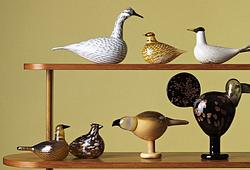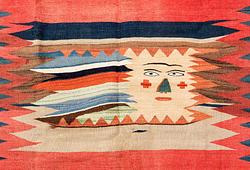Albert Edelfelt
ALBERT EDELFELT, "PARK MOTIF, VAUX SUR SEINE II".
Oil on panel 38x46 cm.
Exhibitions
Ateneum 1954 no 137; Retretti 1983 no 192.
More information
ALBERT EDELFELT: "LANDSCAPE, VAUX-SUR-SEINE II"
Unsigned oil on paperboard, 38x46 cm. Painted in late July 1903.
Landscape, Vaux-sur-Seine II
Literature: B. Hintze, Catalogue no. 997
V. Lukkarinen, Ateneum Art Museum Bulletin 2005, pp. 62–63
www.vauxsurseine.fr/Le-Pavillon-d-Artois.html
Exhibition:
Edelfelt centenary exhibition at the Ateneum, 1954, no. 137
Retretti, Punkaharju, 1983, no. 192
H.996 and H.998, dated: "Vaux s. S. 20.7.03" and "Vaux 26.7.03"
While in Paris Albert Edelfelt was in contact with Suzanne Potrel, her mother and her grandmother. All three women were painters. Edelfelt’s letters to his sisters from France in 1903 indicate that he travelled to the Potrel summer home at Yvelines in Vaux-sur-Seine, just 40 kilometres from Paris. In his sketchbook 28 he made the entry "Pavillon du Buart, Vaux Sur Seine, Seine et Olise" for the attraction of the region. Edelfelt drew and painted several works from the banks of Vaux-sur-Seine that may be regarded as travaux préparatoires to the oil painting that remained in his home and has now been offered for sale.
Known in Edelfelt’s time as the Pavillon du Buart, the Pavillon d'Artôis was the hunting lodge of the Count of Artôis, brother to Louis XVI. The building and its grounds were sketched in 1775 by Richard Mique, the favoured architect of Queen Marie-Antoinette, for whom he also designed the more famous Hameau de la Reine near the Palace of Versailles. Early 20th century maps and postcards enable us to identify the waterside terrace from which Albert Edelfelt painted his Vaux-Sur-Seine II work in July 1893. With its urns, flowers and weeping willow trees, this promenade forms part of a modern parkland estate incorporating artificial lakes, caves and 18th century neoclassical architectural elements into an English landscape style.
Albert Edelfelt’s painting style evolved after the 1900 Paris World Fair, where the Pavillon Finlande gained prominence for its Kalevala-themed frescoes and panelled surfaces. Edelfelt was also influenced by fellow members of the Saint Petersburg Mir Iskusstva (World of Art) movement and by art deco journal articles published in The Studio. Mir Iskusstva also included Pekka Halonen and Väinö Blomstedt who had studied under Paul Gauguin in Paris, thereby introducing Les Nabis group postimpressionist influences. The undulating and sketchy brushwork of this painting suggests that Edelfelt was modernising his style. This is also evident in the pencil drawings where he drew moving characters in a single stroke. Similar drawings were subsequently made by Fauvists such as Matisse or expressionists including Picasso. Edelfelt’s untimely death in 1905 robbed us of the opportunity to see how his art might have evolved from this point on.
Marina Catani
Artist
Albert Edelfelt is considered one of Finland's greatest artists of the 19th century. After studying in Antwerp and Paris, he settled in France, where he received several exhibition medals and was honored with the Legion of Honour, notably for the famous portrait of Pasteur. He was also summoned by Alexander III to St. Petersburg to portray the Tsar's children. Edelfelt often returned to themes from Finnish history, such as his illustrations for 'The Tales of Ensign Stål.'
Edelfelt's works display an artistic breadth that ranges from everyday life in the Finnish archipelago to prestigious society portraits and historical paintings. In his depictions of everyday life, he managed to merge traditional academic painting with the new techniques of plein air painting, which achieved great success in France. The painting 'The Funeral of a Child' was awarded a third-class medal at the annual Salon in Paris in 1880, marking the most significant international success for Finnish painting at the time.
Albert Edelfelt is primarily represented in Ateneum in Helsinki, but also in the National Museum in Stockholm, as well as museums in Copenhagen, Luxembourg, and Paris.
Read more






































